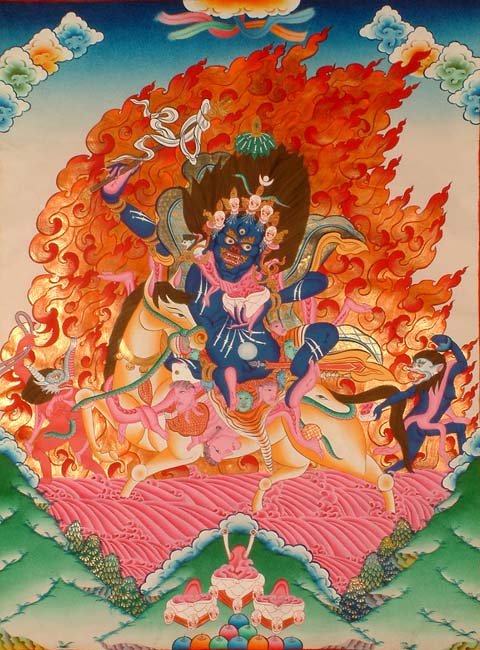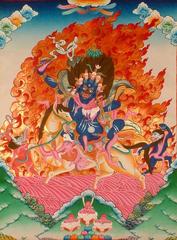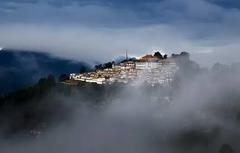
Visiting Tawang Monastery: Hours, Tickets, and Tips
Date: 18/07/2024
Introduction
Table of Contents
- [Introduction](#introductionintroduction)
- [History and Significance](#history-and-significancehistory-and-significance)
- [Origins and Foundation](#origins-and-foundationorigins-and-foundation)
- [A Legacy of the Nyingmapa School](#a-legacy-of-the-nyingmapa-schoola-legacy-of-the-nyingmapa-school)
- [Architectural Marvel and Cultural Hub](#architectural-marvel-and-cultural-hubarchitectural-marvel-and-cultural-hub)
- [A Turbulent Past and Enduring Spirit](#a-turbulent-past-and-enduring-spirita-turbulent-past-and-enduring-spirit)
- [Visitor Information](#visitor-informationvisitor-information)
- [Visiting Hours and Ticket Prices](#visiting-hours-and-ticket-pricesvisiting-hours-and-ticket-prices)
- [Best Times to Visit](#best-times-to-visitbest-times-to-visit)
- [Accessibility](#accessibilityaccessibility)
- [Travel Tips](#travel-tipstravel-tips)
- [How to Get There](#how-to-get-therehow-to-get-there)
- [What to Bring](#what-to-bringwhat-to-bring)
- [Health Precautions](#health-precautionshealth-precautions)
- [Nearby Attractions](#nearby-attractionsnearby-attractions)
- [Sela Pass](#sela-passsela-pass)
- [Nuranang Waterfall](#nuranang-waterfallnuranang-waterfall)
- [Urgelling Monastery](#urgelling-monasteryurgelling-monastery)
- [Cultural Etiquette and Insights](#cultural-etiquette-and-insightscultural-etiquette-and-insights)
- [Respectful Behavior](#respectful-behaviorrespectful-behavior)
- [Footwear](#footwearfootwear)
- [Offerings](#offeringsofferings)
- [Photography Etiquette](#photography-etiquettephotography-etiquette)
- [Food and Drink](#food-and-drinkfood-and-drink)
- [Local Festivals](#local-festivalslocal-festivals)
- [FAQ Section](#faq-sectionfaq-section)
- [Conclusion](#conclusionconclusion)
- [Call to Action](#call-to-actioncall-to-action)
History and Significance
Origins and Foundation
Tawang Monastery, perched atop a hill in Arunachal Pradesh, India, has a history as captivating as its Himalayan setting. The monastery’s origins trace back to 1680. It was established following the instructions of the 5th Dalai Lama, Ngawang Lobsang Gyatso, after Merak Lama Lodre Gyatso encountered a miraculous white horse belonging to the King of Lhasa at the very spot. This divine sign marked the chosen location for the monastery, fulfilling the prophecy of the 4th Dalai Lama.
A Legacy of the Nyingmapa School
Tawang Monastery proudly upholds the teachings and traditions of the Nyingmapa school, the oldest of the four major schools of Tibetan Buddhism. This lineage emphasizes the teachings of Padmasambhava, also known as Guru Rinpoche, who is revered as a second Buddha for establishing Buddhism in Tibet in the 8th century. The monastery’s adherence to the Nyingmapa school is evident in its vibrant murals, intricate rituals, and the profound spiritual atmosphere that permeates its hallowed halls.
Architectural Marvel and Cultural Hub
Known as “Galden Namgey Lhatse” in Tibetan, meaning “Celestial Paradise in a Clear Night,” Tawang Monastery is the largest in India and the second largest in the world. Its impressive structure sprawls across 45 acres of land, enclosed by a 610-meter long compound wall. Within its walls, the monastery houses an impressive collection of scriptures and artifacts, including an enormous gilded statue of Buddha, standing tall at 26 feet.
A Turbulent Past and Enduring Spirit
The monastery’s history has not been without its challenges. Its strategic location near the Indo-Tibetan border has made it a witness to political turmoil and military conflict. During the 1962 Sino-Indian War, the monastery suffered damage, and many of its precious artifacts were lost or displaced. However, its spirit remained unbroken. Following the war, the Indian government undertook extensive restoration efforts, breathing new life into this ancient sanctuary.
Visitor Information
Visiting Hours and Ticket Prices
Tawang Monastery is open to visitors from 7:00 AM to 7:00 PM every day. There is no entry fee, but donations are welcomed to support the upkeep of the monastery.
Best Times to Visit
The best time to visit Tawang Monastery is from March to October when the weather is pleasant and the annual Torgya festival takes place, offering a vibrant cultural experience.
Accessibility
The monastery is accessible by road from Tawang town, which is well-connected by bus and taxi services. However, the journey involves navigating hilly terrain, so it’s advisable to hire a local driver familiar with the area.
Travel Tips
How to Get There
- By Air: The nearest airport is Tezpur Airport, approximately 317 km away. From there, you can take a taxi or bus to Tawang.
- By Train: The nearest railway station is in Tezpur, and road travel from there is the most common option.
What to Bring
- Pack warm clothing, as temperatures can drop significantly, especially in the evenings.
- Comfortable walking shoes are also recommended.
Health Precautions
Due to the high altitude, ensure you are well-hydrated and acclimate properly to avoid altitude sickness.
Nearby Attractions
Sela Pass
Located about 78 km from Tawang, this high-altitude mountain pass offers stunning views and is a popular stop for travelers.
Nuranang Waterfall
Approximately 40 km from Tawang, this breathtaking waterfall is a must-visit for nature enthusiasts.
Urgelling Monastery
The birthplace of the 6th Dalai Lama, this monastery is another significant site near Tawang.
Cultural Etiquette and Insights
Respectful Behavior
Maintain a quiet and respectful demeanor within the monastery premises. Avoid loud conversations, shouting, or any behavior that might disturb the peaceful atmosphere.
Footwear
Remove your shoes before entering the temples and the main prayer hall.
Offerings
It’s customary to offer a small donation at the monastery entrance or inside the temples as a gesture of respect.
Photography Etiquette
Photography is generally allowed within the monastery complex, except for certain restricted areas like the main prayer hall. However, it’s always best to ask for permission before taking photographs, especially of the monks.
Food and Drink
Refrain from eating, drinking, or smoking within the monastery complex.
Local Festivals
If possible, plan your visit to coincide with one of the vibrant festivals celebrated at Tawang Monastery, such as Losar (Tibetan New Year) or Torgya Festival, to witness the rich cultural heritage of the region.
FAQ Section
Q: What are the visiting hours for Tawang Monastery? A: The visiting hours are from 7:00 AM to 7:00 PM every day.
Q: How much are tickets to Tawang Monastery? A: There is no entry fee, but donations are welcomed.
Q: What is the best time to visit Tawang Monastery? A: The best time to visit is from March to October.
Q: How can I get to Tawang Monastery? A: The nearest airport and railway station are in Tezpur. From there, you can travel by road.


